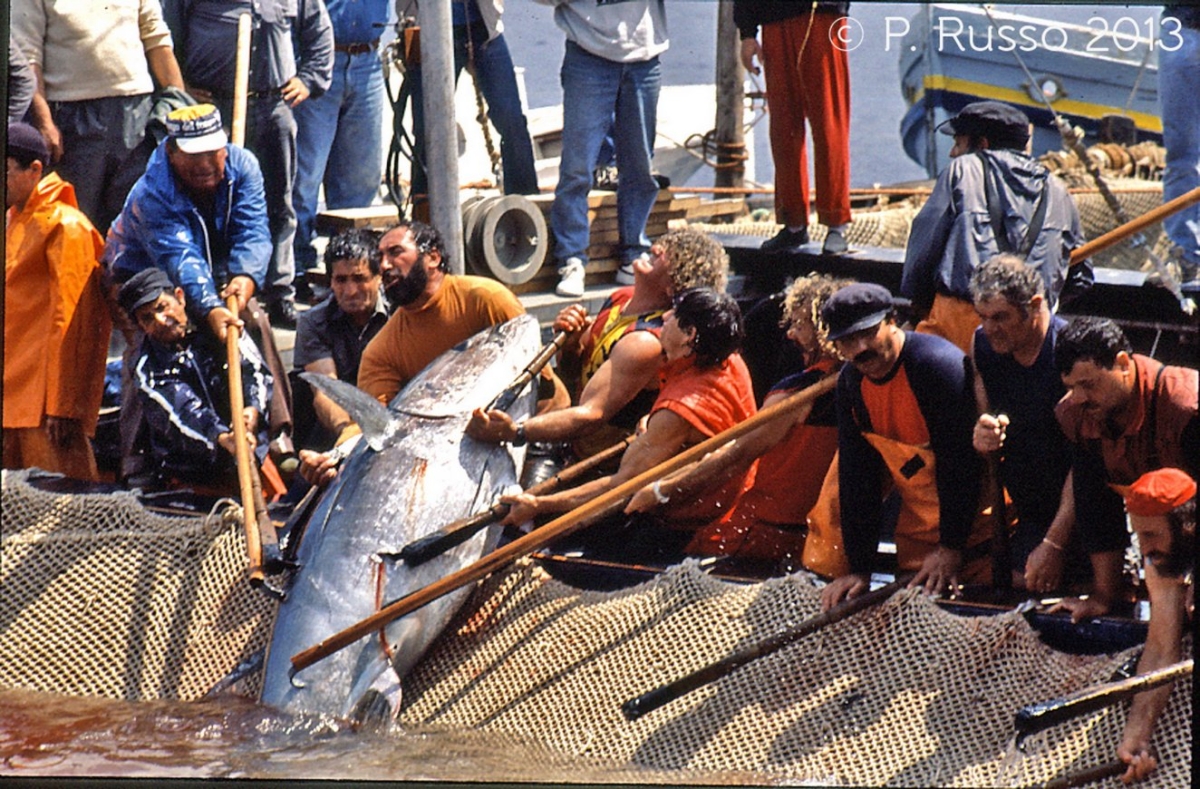The Mattanza: Not just fishing, but an ancient ritual
The Mattanza ritual in Favignana is certainly one of the most characteristic and well-known events of the Egadi islands, and in particular, of Favignana.
Although to an external eye it may have appeared an uncivilized, almost barbaric fishing method, during which the seawater was literally dyed red, in reality, this ancient tradition had its roots in historical, social, economic, and cultural reasons.
The importance of tuna in the lives of the inhabitants of the Egadi is demonstrated by the depictions of these marine animals in the so-called Grotta del Genovese in Levanzo, where paintings and graffiti dating back almost 10,000 years depict this animal: it is one of the earliest prehistoric representations of fish found in Europe.
The wooden boats destined for this ritual, the so-called vascelli, were prepared during the long winter months to be ready at the first signs of spring. The tonnara, in fact, had to be equipped with a huge net kilometers long and with a total surface area of almost 350,000 square meters.
It was the rais, the undisputed leader of the entire Mattanza operation, who decided where and when exactly this net should be dropped; the location was chosen through long observations from the "mire," small stone towers placed along the coast.
Here the intricate ensemble of interwoven meshes was dropped at the beginning of spring in the area between Favignana and Levanzo and anchored to the bottom, about 40 meters below the sea surface.
The net was designed to be a huge funnel trap in which the red tuna got caught in their annual migration: the waters around the Egadi islands, in fact, have an ideal habitat for the reproduction of these fish, which undertake a long journey every year starting from the Atlantic to reach the Sicilian coasts.
The main characteristic of these nets was the impossibility for the captured prey to escape; on the contrary, it was naturally pushed towards the last stretch, called the "death chamber."
The Mattanza, properly speaking, is the description of this last phase.
Once again, it was the rais who decided which day was dedicated to the capture of the tuna, now trapped without escape in the last stretch of the net.
The boats were arranged in a circle and the fishermen, called tonnaroti, engaged in a real struggle with the tuna. Once the net was lifted from the water, by force of arms, to the rhythm of the cialome (chants that accompany the Mattanza), preceded and accompanied by prayers of thanksgiving, litanies, and invocations to the saints, the men worked in unison on the boats to catch the tuna, harpoon it, bring it onto the boat, and finish it off with a club.
At the end of the day, tradition required that the tonnaroti immerse themselves in the water to clean themselves of the blood and to pay homage to the sea and the tuna, and that once they had risen back onto the boats, they returned to the port in religious silence.
Thus, the Mattanza was not simply the fishing of tuna: it was an event made up of rituals, songs, precise gestures repeated over the centuries by fishermen but also, despite the brutality of the killing, a moment of prayer and thanksgiving for the sacrifice of the tuna to allow the life of the fishermen and their families.
The role of the rais in Favignana
In this harsh but necessary view of the tuna slaughter, the role of the rais was fundamental. This figure was not only an expert in seas, currents, and winds; he was not just the one on whom the success of the operation depended, which determined the survival of dozens of island families.
The rais was above all the one who also guided the ritualistic and almost religious aspect of the entire event: the relationship between man and the sea, the struggle for survival, the thanks to the divine being but also to the tuna, for the sacrifice of its life.
The last rais, Gioacchino Cataldi, died in 2018.
Since 2007, the tuna slaughter has been suspended, also for economic reasons: the number of tuna has gradually decreased, until reaching 100 units in the last allowed fishing.
